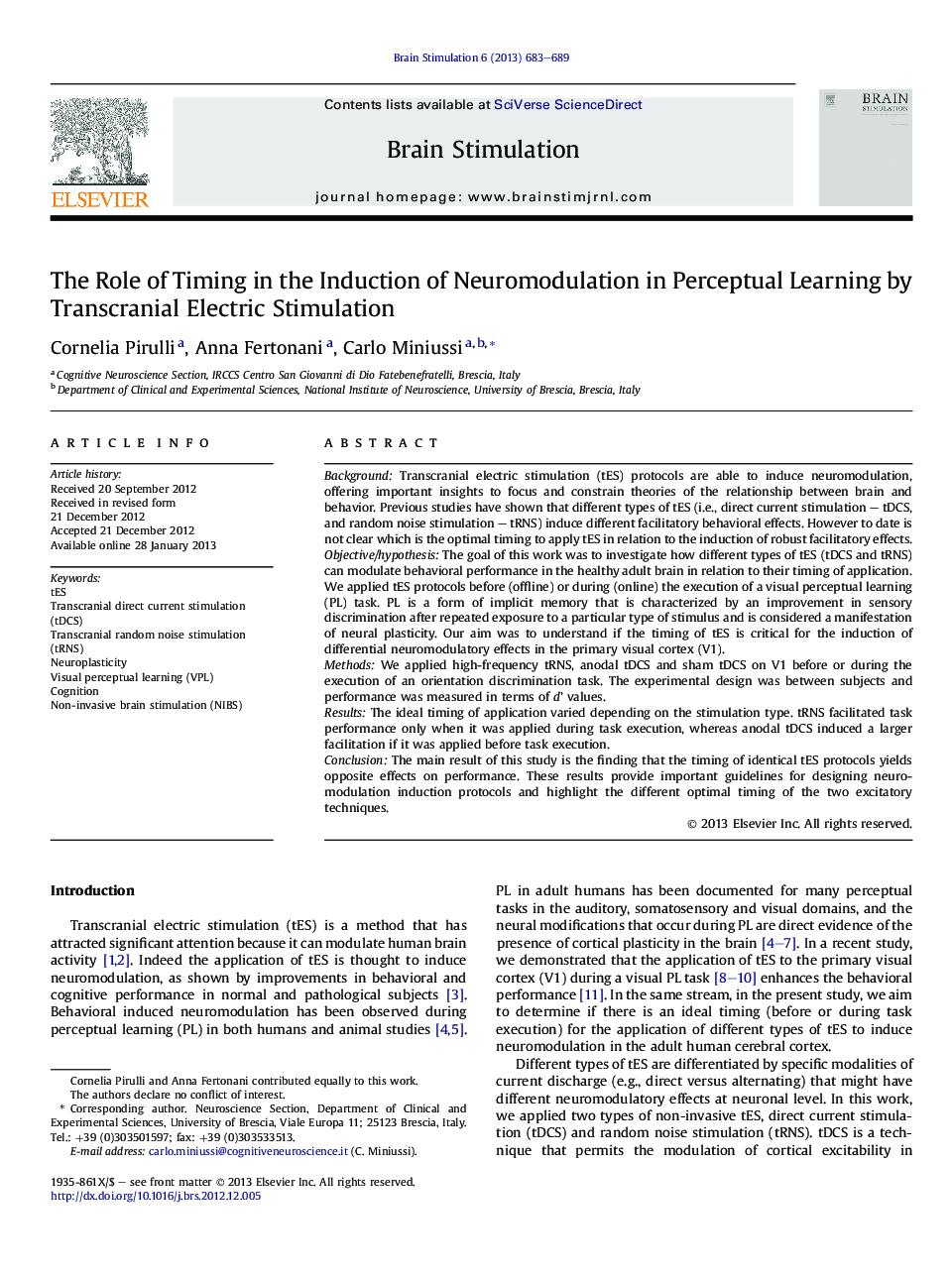| کد مقاله | کد نشریه | سال انتشار | مقاله انگلیسی | نسخه تمام متن |
|---|---|---|---|---|
| 3038935 | 1184679 | 2013 | 7 صفحه PDF | دانلود رایگان |

BackgroundTranscranial electric stimulation (tES) protocols are able to induce neuromodulation, offering important insights to focus and constrain theories of the relationship between brain and behavior. Previous studies have shown that different types of tES (i.e., direct current stimulation – tDCS, and random noise stimulation – tRNS) induce different facilitatory behavioral effects. However to date is not clear which is the optimal timing to apply tES in relation to the induction of robust facilitatory effects.Objective/hypothesisThe goal of this work was to investigate how different types of tES (tDCS and tRNS) can modulate behavioral performance in the healthy adult brain in relation to their timing of application. We applied tES protocols before (offline) or during (online) the execution of a visual perceptual learning (PL) task. PL is a form of implicit memory that is characterized by an improvement in sensory discrimination after repeated exposure to a particular type of stimulus and is considered a manifestation of neural plasticity. Our aim was to understand if the timing of tES is critical for the induction of differential neuromodulatory effects in the primary visual cortex (V1).MethodsWe applied high-frequency tRNS, anodal tDCS and sham tDCS on V1 before or during the execution of an orientation discrimination task. The experimental design was between subjects and performance was measured in terms of d' values.ResultsThe ideal timing of application varied depending on the stimulation type. tRNS facilitated task performance only when it was applied during task execution, whereas anodal tDCS induced a larger facilitation if it was applied before task execution.ConclusionThe main result of this study is the finding that the timing of identical tES protocols yields opposite effects on performance. These results provide important guidelines for designing neuromodulation induction protocols and highlight the different optimal timing of the two excitatory techniques.
Journal: Brain Stimulation - Volume 6, Issue 4, July 2013, Pages 683–689